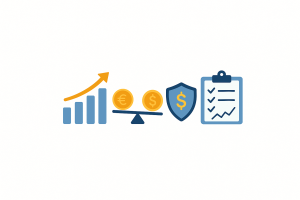Introduction
The September 2025 meeting of the Federal Open Market Committee (FOMC) has captured intense global attention. For many analysts and traders, this meeting feels like a repeat of the one held a year earlier, in September 2024. Once again, the Federal Reserve faces a balancing act between persistent inflation, a cooling labour market, and uncertain global growth. The phrase “déjà vu” has been used frequently to describe this policy setting because the same economic themes that dominated the 2024 landscape have resurfaced. However, while the environment looks familiar, there are important differences beneath the surface. The Federal Reserve’s message, its reasoning, and its longer-term implications for the US dollar are all shaped by subtle but crucial changes in data, market sentiment, and global conditions.
A Déjà Vu Scenario: Comparing 2024 And 2025
In both 2024 and 2025, the Fed faced a challenging mix of slowing economic momentum and lingering inflationary pressures. In September 2024, the Fed made its first rate cut since the pandemic era, responding to evidence that job growth was losing steam and consumer spending was slowing. A year later, in September 2025, the economic landscape looks strikingly similar. Job creation has again decelerated, wage growth is moderating, and inflation remains stubbornly above the two-percent target.
The market expectation leading up to the 2025 decision was almost identical to that of 2024: a 25-basis-point rate cut. However, while the surface details are similar, the motivations and risks differ. In 2024, the Fed acted from a position of confidence that inflation was steadily easing. In 2025, inflation appears more persistent, driven by supply-chain frictions, energy-price volatility, and higher input costs. This makes the 2025 cut more controversial and more cautious in tone.
Key Differences Between The Two Years
1. Inflation Pressures Are Harder to Control
The biggest difference between the two years lies in inflation dynamics. In 2024, inflation had clearly peaked and was trending lower. By contrast, in 2025, inflation remains elevated and sticky, with several components—particularly housing and services—showing resistance to monetary tightening. Price growth in essentials such as food, transportation, and healthcare has created a more complex environment for policymakers. The Fed’s credibility is at stake because cutting rates too aggressively might reignite inflation. This means that although the September 2025 rate cut matches last year’s in magnitude, its message is far more cautious.
2. Labour Market Conditions Have Shifted
The labour market has been another defining factor in both cycles. In 2024, unemployment had risen modestly, and the slowdown in hiring was enough to justify a policy shift. In 2025, job creation has continued to decline, but the labour-force participation rate has increased, masking deeper weakness. While headline unemployment remains moderate, underemployment and part-time work are on the rise. The Fed must weigh whether these signals indicate cyclical weakness or a structural adjustment in the post-pandemic economy.
3. Global Policy Divergence Is Wider
In 2024, most major central banks were moving in a similar direction—leaning toward cautious easing. In 2025, the landscape is more fragmented. The European Central Bank and the Bank of England have been hesitant to cut rates, citing lingering inflation and fiscal constraints. The Bank of Japan remains an outlier, maintaining its ultra-loose stance. This divergence has made currency markets particularly volatile. The relative stance of central banks now plays a greater role in determining capital flows, meaning that the dollar’s strength or weakness is not just about US policy but about how it compares globally.
The September 2025 Fed Decision: What Happened And Why?
The Federal Reserve cut its benchmark interest rate by 25 basis points during the September 2025 meeting. This move was widely expected, but the accompanying statement was the real focus. The Fed described the cut as a “risk-management adjustment,” aimed at supporting growth without triggering renewed inflationary pressure. Officials emphasised that the decision did not necessarily mark the beginning of a full easing cycle.
The statement highlighted three key considerations:
Moderating Economic Growth: Data showed that output had slowed across manufacturing, housing, and services sectors.
Persistent Inflation Risks: Although core inflation had declined from its peaks, the downward momentum had stalled.
Global Economic Uncertainty: The Fed acknowledged growing headwinds from weaker global trade and geopolitical tensions affecting energy prices.
Chair Jerome Powell’s press conference underscored that future rate moves would depend heavily on data. He pointed to softening labour-market indicators but also cautioned against underestimating the resilience of consumer spending.
Impact On The US Dollar
The dollar’s reaction to the September 2025 rate cut has been mixed. In the immediate aftermath, the dollar index weakened modestly, reflecting traders’ expectations of further easing later in the year. However, as investors digested the Fed’s cautious tone, the greenback regained some ground.
The relationship between interest-rate expectations and currency valuation is straightforward in theory: lower interest rates make a currency less attractive by reducing yield differentials. In practice, however, other forces such as risk sentiment and relative global policies complicate the picture. In 2025, because many other central banks remain on hold, the dollar has retained some resilience.
Scenarios For The Dollar Moving Forward
Scenario 1: Dovish Fed and Continued Rate Cuts
If the Fed follows the September move with additional cuts before year-end, the dollar is likely to weaken across the board. A sustained easing cycle would lower real yields on US assets, prompting capital to flow toward higher-yielding currencies. Under this scenario, EUR/USD could extend its gains, while USD/JPY and USD/CHF would likely trend lower.
Scenario 2: One-and-Done Cut with Cautious Tone
If the Fed frames the September cut as a one-off adjustment and maintains a balanced tone, the dollar could stabilise or even strengthen slightly. Markets may interpret restraint as a sign of confidence in the economy, which could attract investors seeking stability.
Scenario 3: Inflation Rebound and Policy Reversal
If inflation unexpectedly accelerates again, the Fed may need to pause or even reverse its easing bias. In such a case, the dollar could surge as traders anticipate tighter policy. This scenario is less likely but cannot be ruled out given the volatility in commodity prices and global trade dynamics.
How The Rate Cut Affects Major Currency Pairs?
EUR/USD
The euro-dollar pair has been at the centre of market focus. A dovish Fed stance tends to push the euro higher, but this time the move has been muted due to uncertainty around European growth and inflation. The pair faces resistance near the 1.19 area and support around 1.17 to 1.1650. Sustained movement above resistance would confirm a medium-term bullish outlook for the euro, while a drop below support could signal renewed dollar strength.
GBP/USD
Sterling has followed a similar trajectory. With the Bank of England remaining cautious, the pound has gained modestly against the dollar. Technical resistance lies near 1.37, while support is found near 1.34. The pair’s path depends largely on how aggressively the Fed continues to ease relative to the BoE’s stance.
USD/JPY
The dollar-yen pair has shown a mild downward bias due to narrowing yield spreads. With the Bank of Japan maintaining accommodative policy, the yen remains sensitive to US Treasury yields. A sustained drop in yields would strengthen the yen, pushing USD/JPY lower toward the 143-144 region.
Emerging Market Currencies
Emerging-market currencies have generally benefited from the softer dollar tone, although volatility remains high. The Indian rupee, Mexican peso, and Brazilian real have all gained modestly, but risk-off sentiment linked to global uncertainty could quickly reverse these moves.
Global Macro Implications
The Fed’s decision extends beyond currency markets. It affects bond yields, equity valuations, and commodity prices worldwide.
Bond Markets
US Treasury yields fell modestly following the announcement, with the ten-year yield hovering near 3.9 percent. Lower yields have improved liquidity conditions globally, especially in emerging markets. However, yield-curve inversion continues to hint at recession risk, suggesting that investors remain cautious.
Equities
Equity markets initially rallied on expectations of looser financial conditions. Technology and growth sectors led the gains, as lower borrowing costs generally support valuations. Yet analysts warn that a Fed rate cut in the face of persistent inflation may limit upside potential and lead to future corrections.
Commodities
Gold prices rose modestly, reflecting both a weaker dollar and investor demand for hedges against inflation. Oil markets remain volatile, influenced by both geopolitical developments and changing demand expectations.
Why History May Not Fully Repeat Itself ?
While 2025 mirrors 2024 in many respects, several structural differences make a complete repetition unlikely. Inflation persistence, global fragmentation, and higher government debt levels all shape a different outcome. The world economy is now operating with less fiscal space and more geopolitical friction, meaning the Fed’s actions have broader ripple effects.
In 2024, markets welcomed the rate cut as a sign of confidence in disinflation. In 2025, investors are more sceptical. The memory of inflation spikes and policy misjudgments has made traders more cautious. Consequently, even if the Fed cuts rates further, the reaction in asset markets may be more measured and less euphoric.
Strategic Takeaways For Traders And Investors
Watch the Fed’s Tone, Not Just the Action: The September 2025 cut itself was widely anticipated. The real signal lies in how the Fed communicates its future intentions.
Monitor Yield Differentials: The direction of the dollar depends not only on US rates but also on the gap between US and foreign yields.
Use Technical Confirmation: Key levels in EUR/USD, GBP/USD, and USD/JPY can help confirm whether market trends align with fundamental expectations.
Diversify Against Volatility: Both traders and businesses should hedge currency exposure, as central-bank divergence could trigger sharp movements.
Stay Data-Dependent: Upcoming inflation and employment data will determine whether the Fed maintains its easing path or pauses.
The Road Ahead: Late 2025 Outlook
Looking ahead, the consensus view is that the Fed will proceed cautiously. The September 2025 cut may not be the start of a deep easing cycle but rather a tactical move to support growth without undermining price stability. If inflation continues to ease gradually, further modest cuts could follow by December or early 2026.
For the dollar, the likely path is one of controlled weakness. It may drift lower against major peers but avoid sharp declines unless the Fed turns decisively dovish. Equity markets may continue to benefit from easier liquidity, but bond investors will remain vigilant about inflation risks.
Conclusion
The September 2025 FOMC meeting reflects a complex moment in monetary history—one that feels familiar yet carries new challenges. The parallels with 2024 highlight recurring tensions between growth support and inflation control, but the economic backdrop has evolved. Inflation is more stubborn, global divergence is greater, and the Fed’s credibility is under sharper scrutiny.
For the US dollar, the implications are equally nuanced. While the immediate reaction to the rate cut has been muted, the broader trend points toward gradual depreciation if easing continues. Traders and investors must therefore balance near-term technical setups with longer-term macro risks.



